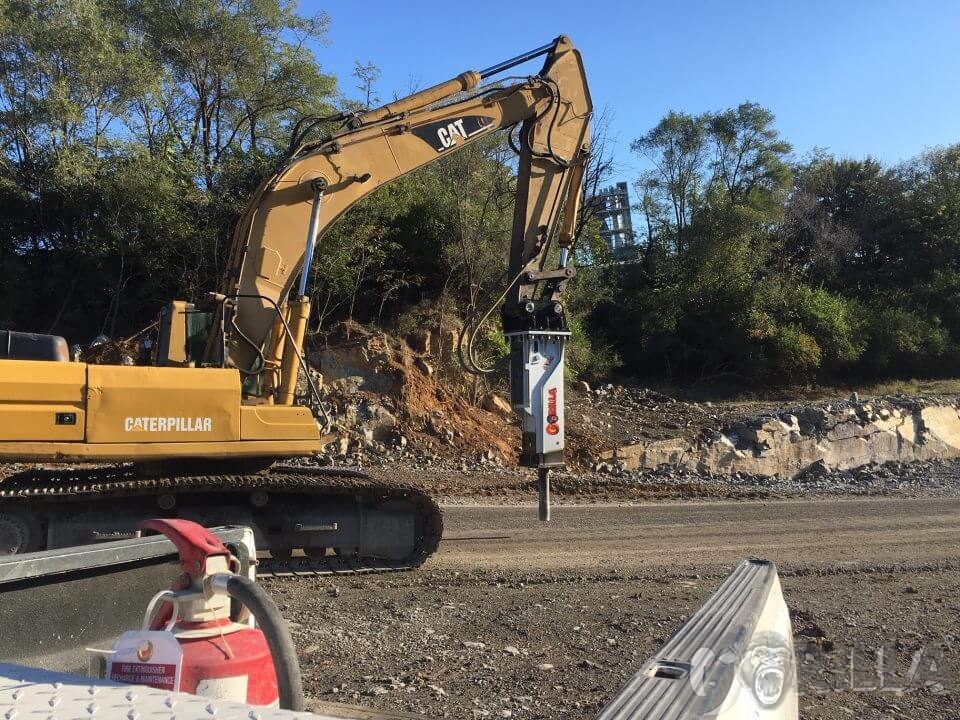Excavators Provide Varied Options For Demolition & Construction Contractors & For C&D Recyclers
April 23, 2018Kubota Unveils First Zero Tail Swing Excavator
April 23, 2018Recycling Today,
Nov, 2004 by Deanne Toto
The loaders employed at recycling facilities and at construction and demolition recycling sites perform a variety of material handling tasks, but their usefulness goes far beyond loading processing equipment and outbound trucks.
It’s this versatility that many manufacturers are keeping in the forefront as they design the next generation of material handling equipment, whether they be wheel loaders or skid-steer loaders.
Faced with these choices, selecting the right mix of equipment for a particular recycling yard or demolition job can be somewhat intimidating. However, determining the right loader typically starts with the material to be handled and the level of production required.
IN THE SHOWROOM
“A few key considerations that affect equipment selection would be the size of the job, the type of material being removed and the height of the structures,” Rusty Schaefer, marketing manager for Case Construction Equipment, Racine, Wisc., says. “Additional considerations include dust control, sound restrictions and lift capacities of the equipment.”
Schaefer adds that demolition contractors should also consider their project deadlines in order to determine the number of pieces of equipment needed and the way in which the machines will be used.
Kelly Moore, product manager for Gehl, West Bend, Wisc., says that while compact equipment may be more suitable for jobs with space restrictions, he suggests that choosing the largest loader a site will allow enables the contractor to increase his productivity by getting more done in less time.
“Large equipment allows for more production on open projects,” Lance Mathern, marketing manager for Bobcat Co., West Fargo, N.D., agrees. However, he adds that compact equipment, like skid-steer loaders, is often less expensive, easier and quicker to transport on and off site, can fit into tight spaces and can operate a variety of attachments.
Nell LeBlanc, senior marketing consultant for Caterpillar Inc., Peoria, Ill., says that in the highly competitive demolition field, a contractor is most concerned with machine versatility, durability and dependability.
“All machines working at a site are often needed to perform multiple tasks. Various work tools, properly applied, are the key to success,” he says.
As far as durability and reliability are concerned, Leblanc says, “Machines and work tool designs must afford for maximum up time when utilized in harsh environments.
With this information in mind, selecting among the variety of wheel loaders and skid steers available should be a bit easier, though both machines offer different strengths that may be more suitable for a given job.
FREE WHEELING
“In demolition, the wheel loader most often supports the primary demolition tool, the excavator,” Jack Bolton of Volvo Construction Equipment, Asheville, N.C., says. “The loader can set barricades and set steel plates with a set of forks or a material handling arm. When equipped with a broom, the loader can clean dust and debris blown out from the demolition site. Of course, when the loader has a bucket, it can load tracks and clean large debris from haul roads,” he adds.
Leblanc says wheel loaders are often used to move bulk quantities of demolition debris, such as crushed concrete, blocks and wood, in primary and secondary demolition applications. “Staging materials and loading trucks are a common requirement,” he says.
“In terms of demolition, a wheel loader is primarily a tool carrier because of its ability to change attachments,” David Morice, heavy-range equipment manager for JCB Inc., Pooler, Ga., says.
When equipped with hydraulic couplers, which allow for quick attachment changes, Case’s Shaefer points out that wheel loaders can be equipped with forks, scrap grapple buckets and brooms, increasing their versatility and utilization.
SKIDDING ALONG
“Overall, skid loaders are probably more predominant in recycling or demolition because of their versatility,” Gehl’s Moore says. “For overall purposes, whether it is any kind of recycling or demolition application, the skid loader is really going to be the best performer and producer that a contractor can look for,” he says, crediting the machine’s versatility.
Dan Rafferty, compact equipment product manager for JCB Inc, Pooler, Ga., says that skid steers offer small to midsize recyclers the versatility needed to handle multiple tasks thanks to the machines’ quick-taches and auxiliary hydraulics.
LeBlanc also finds skid steers to be the most versatile equipment in recycling and demolition applications. “Their compact size, lightweight, nimble maneuverability, ease of operation and endless array of work tools allows the SSL (skid-steer loader) to perform many functions.”
Additionally, compared to a wheel loader, Moore says a skid loader’s cycle time is going to be considerably faster.
“In demolition, skid-steer loaders are typically used for interior demolition or exterior flatwork” Bobcat’s Mathern says. “For example, they can be equipped with a breaker, drop hammer, wheel saw or planer attachment to demolish concrete, asphalt, etc., and then switch to an industrial fork or bucket grapple to remove material.”
Mathern continues, “In recycling operations, SSLs play the cleanup role. SSLs equipped with an industrial fork or bucket grapple typically remove debris from the immediate demolition area, particularly from tight places.” Additionally, skid steers are often used to cleanup around processing equipment, removing any debris that may fall off conveyors or from the machinery itself and to remove the processed material, he says.
For many, the benefit of skid steers lies in their maneuverability and versatility.
“The real benefit of skid steers in any application is their maneuverability in confined areas,” Schaefer says. “When used with hydraulic couplers and a vast array of attachments (shears, hammers, scrap grapple buckets, pallet forks, brooms) skid steers can be highly utilized machines.”
Clearly, versatility remains a key consideration when selecting loaders for use in recycling applications and in demolition applications, particularly. Manufactures are doing their best to deliver durable, dependable equipment that is up to the challenge.
“Any machine and tool combination that can improve productivity and minimize manual labor–demolition contractors are very concerned about skilled labor shortages in their industry–is a priority,” Leblanc says. “Equipment versatility will help to ensure that a contractor remains competitive for years to come.”
The author is associate editor of Recycling Today magazine and can be contacted by e-mail at dtoto@gie.net.
ROLL ON
Because of the rigors of demolition environments, contractors may wish to consider solid or foam-filled tires for their loading equipment in order to reduce downtime resulting from flats and wear.
Kelly Moore, product manager for Gehl, West Bend, Wisc., says, solid tires are the best choice for demolition environments in terms of wear and puncture resistance, though they provide a harder ride. “If they are traveling longer distances at higher ground speed, some customers might prefer to go to severe-duty ties that can be air inflated or poly inflated. With the poly material, you still get the same softness as when you have air in the tire.”
Jay Barth of JCB Inc., Pooler, Ga., says steel-belted, severe-duty mining tires have good characteristics in these applications. He says these tires may be a bit easier to change than the foam-filled tires, which can be difficult to dismount.
COPYRIGHT 2004 G.I.E. Media, Inc.
COPYRIGHT 2004 Gale Group



